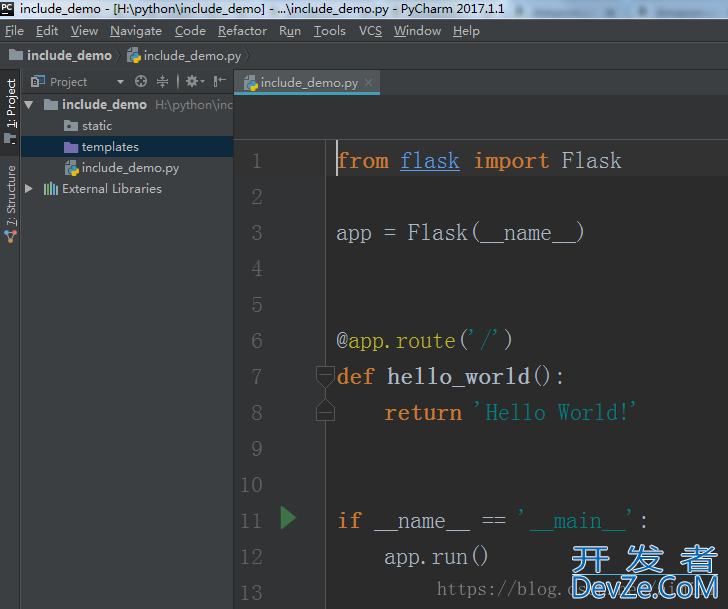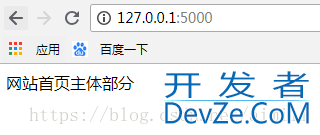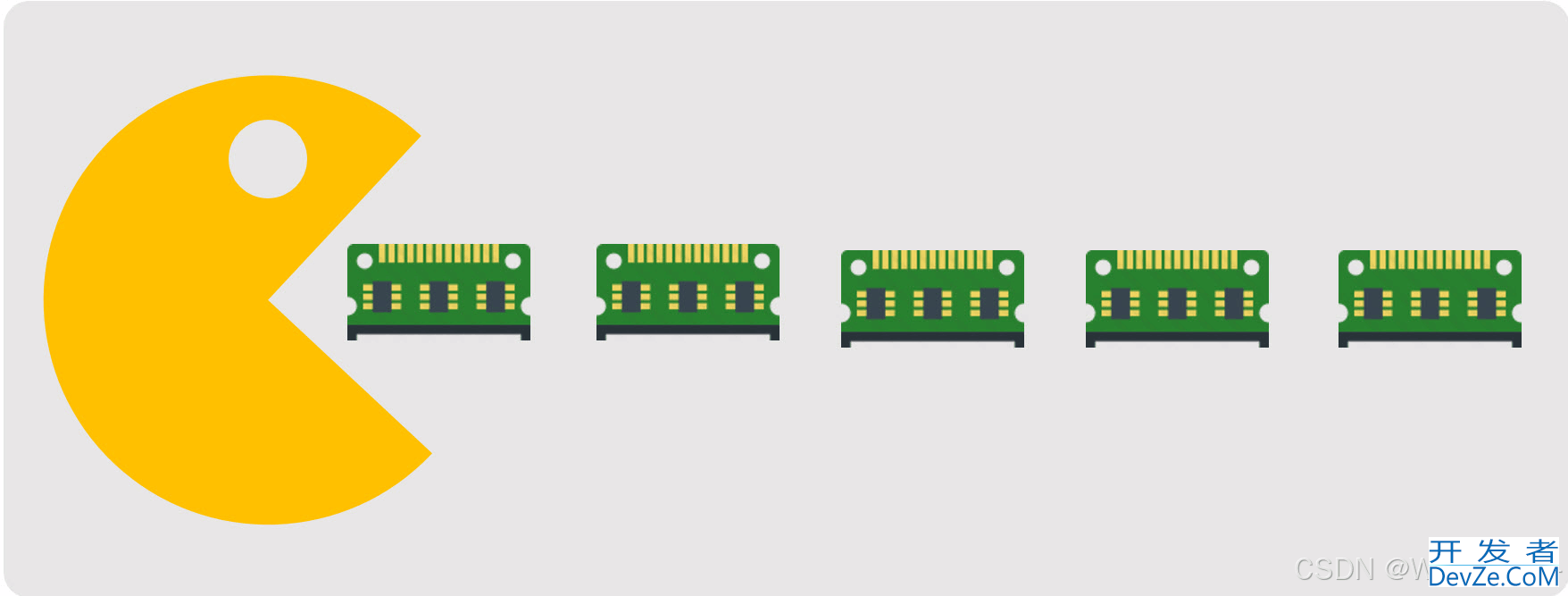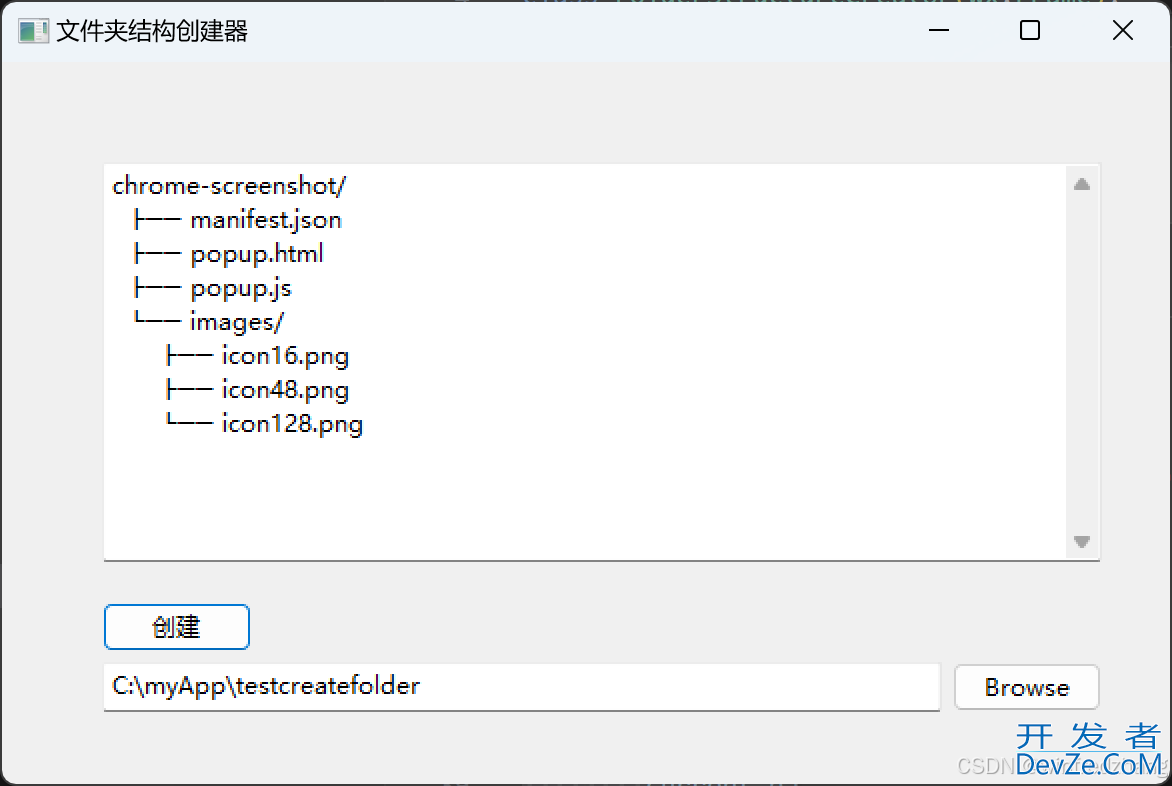目录
- include标签如何使用?
- include标签的使用
- 截图如下
- 总结
include标签如何使用?
incwww.devze.comlude标签的使用
在讲python include标签使用之前,我们新建一个include_demo项目
截图如下

项目新建好了,再在templates文件下新建一个index.html文件,代码如下:
<!DOCTYPE html>
<html lang="en">
<head>
<meta charset="UTF-8">
<title>Title</title>
<style>
*{margin:0;padding:0;}
ul{list-style: none;}
a{text-decoration: none;
color: #ffffff;}
nav,footer,.main{width:1000px; height:40px; margin:0 auto;}
ul{width: 1000px; height:40px; line-height: 40px;
background-color:#000000;}
li{width:120px; height:40px; line-height:40px; text-align: center;
float:left;}
.main{clear:both; line-height:40px; background-color:pink;}
footer{height:40px; background-color: green;}
</style>
</head>
<bod编程y>
<nav>
<ul>
<li><a href="#" rel="external nofollow" rel="external nofollow" rel="external nofollow" rel="external nofollow" rel="external nofollow" rel="external nofollow" rel="external nofollow" rel="external nofollow" rel="external nofollow" rel="external nofollow" rel="external nofollow" rel="external nofollow" >首页</a></li>
<li><a href="#" rel="external nofollow" rel="external nofollow" rel="external nofollow" rel="external nofollow" rel="external nofollow" rel="external nofollow" rel="external nofollow" rel="external nofollow" rel="external nofollow" rel="external nofollow" rel="external nofollow编程" rel="external nofollow" >关于我们</a></li>
<li><a href="#" rel="external nofollow" rel="external nofollow" rel="external nofollow" rel="external nofollow" rel="external nofollow" rel="external nofollow" rel="external nofollow" rel="external nofollow" rel="external nofollow" rel="external nofollow" rel="external nofollow" rel="external nofollow" >产品中心</a></li>
<li><a href="#" rel="external nofollow" rel="external nofollow" rel="external nofollow" rel="external nofollow" rel="external nofollow" rel="external nofollow" rel="external nofollow" rel="external nofollow" rel="external nofollow" rel="external nofollow" rel="external nofollow" rel="external nofollow" >新闻中心</a></li>
<li><a href="#" rel="ewww.devze.comxternal nofollow" rel="external nofollow" rel="external nofollow" rel="external nofollow" rel="external nofollow" rel="external nofollow" rel="external nofollow" rel="external nofollow" rel="external nofollow" rel="external nofollow" rel="external nofollow" rel="external nofollow" >服务宗旨</a></li>
<li><a href="#" rel="external nofollo开发者_JAVA入门w" rel="external nofollow" rel="external nofollow" rel="external nofollow" rel="external nofollow" rel="external nofollow" rel="external nofollow" rel="external nofollow" rel="external nofollow" rel="external nofollow" rel="external nofollow" rel="external nofollow" >联系我们</a></li>
</ul>
</nav>
<div class="main">
网站首页主体部分
</div>
<footer>
网站首页footer部分
</footer>
</body>
</html>
然后在include_demo.py页面渲染一下index模板文件,代码如下:
from flask import Flask,render_template
app = Flask(__name__)
@app.route('/')
def hello_world():
return render_template("index.html")
if __name__ == '__main__':
app.run(debug=True)
运行include_demo.py文件,运行结果如下:

在这里主要是为了方便讲解include标签,所有没太注重前端页面部分。
通过上面index.html文件就能发现,我将公共和私有代码部分都在一块,假设网站有几十个页面,我将所有公共代码和私有代码
都放一块,如果有一天要修改某个公共代码块,哪就得修改几十个页面,那将是件非常麻烦的事。为了方便管理项目,我们将页面公共、私有代码部分抽取出来。
我们新建一个header.html文件,把css样式及nav标签内容复制到header.html页面中。
代码如下:
<!DOCTYPE html>
<html lang="en">
<head>
<meta charset="UTF-8">
<title>Title</title>
<style>
*{margin:0;padding:0;}
ul{list-style: none;}
a{text-decoration: none;
color: #ffffff;}
nav,footer,.main{width:1000px; height:40px; margin:0 auto;}
ul{width: 1000px; height:40px; line-height: 40px;
background-color:#000000;}
li{width:120px; height:40px; line-height:40px; text-align: center;
float:left;}
.main{clear:both; line-height:40px; background-color:pink;}
footer{height:40px; background-color: green;}
</style>
</head>
<body>
<nav>
<ul>
<li><a href="#" rel="external nofollow" rel="external nofollow" rel="external nofollow" rel="external nofollow" rel="external nofollow" rel="external nofollow" rel="external nofollow" rel="external nofollow" rel="external nofollow" rel="external nofollow" rel="external nofollow" rel="external nofollow" >首页</a></li>
<li><a href="#" rel="external nofollow" rel="external nofollow" rel="external nofollow" rel="external nofollow" rel="external nofollow" rel="external nofollow" rel="external nofollow" rel="external nofollow" rel="external nofollow" rel="external nofollow" rel="external nofollow" rel="external nofollow" >关于我们</a></li>
<li><a href="#" rel="external nofollow" rel="external nofollow" rel="external nofollow" rel="external nofollow" rel="external nofollow" rel="external nofollow" rel="external nofollow" rel="external nofollow" rel="external nofollow" rel="external nofollow" rel="external nofollow" rel="external nofollow" >产品中心</a></li>
<li><a href="#" rel="external nofollow" rel="external nofollow" rel="external nofollow" rel="external nofollow" rel="external nofollow" rel="external nofollow" rel="external nofollow" rel="external nofollow" rel="external nofollow" rel="external nofollow" rel="external nofollow" rel="external nofollow" >新闻中心</a></li>
<li><a href="#" rel="external nofollow" rel="external nofollow" rel="external nofollow" rel="external nofollow" rel="external nofollow" rel="external nofollow" rel="external nofollow" rel="external nofollow" rel="external nofollow" rel="exter编程客栈nal nofollow" rel="external nofollow" rel="external nofollow" >服务宗旨</a></li>
<li><a href="#" rel="external nofollow" rel="external nofollow" rel="external nofollow" rel="external nofollow" rel="external nofollow" rel="external nofollow" rel="external nofollow" rel="external nofollow" rel="external nofollow" rel="external nofollow" rel="external nofollow" rel="external nofollow" >联系我们</a></li>
</ul>
</nav>
</body>
</html>
然后新建一个footer.html文件,把footer标签中的内容复制到该文件中。
代码如下:
<!DOCTYPE html>
<html lang="en">
<head>
<meta charset="UTF-8">
<title>Title</title>
</head>
<body>
<footer>
网站首页footer部分
</footer>
</footer>
</body>
</html>
我们在运行主app文件,结果如下:

(^-^),为啥没有居中,背景色也不见了??因为我们没有把样式引入进来(嗯,页面太丑了,没法看了,赶紧关了!!)
OK!我们将公共代码抽取出来后。记得在index.html文件中用include标签导入header、footer代码块,代码如下:
<!DOCTYPE html>
<html lang="en">
<head>
<meta charset="UTF-8">
<title>Title</title>
</head>
<body>
{% include "header.html" %}
<div class="main">
网站首页主体部分
</div>
{% include "footer.html" %}
</body>
</html>
再运行主app文件,结果如下:

嗯,结果是不是和之前一样,对吧!
通过上面例子,相信大部分小伙伴都明白了include标签的作用及用法。总之一句话,include标签的作用就相当于把抽取的代码复制到当前页面中。
总结
以上为个人经验,希望能给大家一个参考,也希望大家多多支持我们。









 加载中,请稍侯......
加载中,请稍侯......
精彩评论